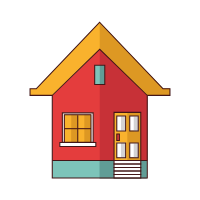5 Signs Of Roof Support Problems
A new roof installation may require more than just replacing the shingles and the sheathing underneath. The main support of the roof, consisting of trusses, rafters, and bracing, may also need to be replaced or repaired at the time of your roof installation.
1. Low-Load Rating
Weather patterns have been changing in some regions, leading to heavier winter snowfalls that result in more weight on the roof. Your roof installer needs to verify the weight load rating for your roof, particularly if you have an older home. A low-weight load may mean you need to choose a lighter roofing material for your new installation, such as asphalt shingles instead of tile, or it may be time to shore up the bracing and trusses so they can support more weight.
2. Missing Braces
Roof trusses are typically made of metal on new homes, which are designed to be well-braced at the time of installation. Older homes may feature wood trusses, which often require additional bracing to ensure they can hold the load of the roof and any moisture that collects upon it. Over the years, braces can break or come loose, or the original bracing may not be sufficient for your modern roof. Replacing and repair of the bracing is necessary during roof replacement.
3. Lack of Strapping
In regions where high winds are common due to storms, tornadoes, or hurricanes, extra bracing may be necessary. Wind bracing is commonly called hurricane strapping, although its use isn't limited to hurricane-prone areas. Older roofs may not have the necessary strapping installed, which can pose a major problem when a big storm rolls through. Your roof installer can add the needed strapping when you have your new roof put on.
4. Water Damage
Leaks in your roof don't just cause water damage to interior insulation and ceilings, the moisture exposure can also damage the support system for your roof. Even a roof with metal trusses will typically have wood rafters, so even newer homes can suffer water damage to the support system. Your installer will examine the support structure for signs of water damage and wood rot. If found, the affected supports must be replaced before the new roof goes on.
5. Horizontal Sagging
One sign of roof support problems that are easily noticeable when standing on the ground outside of the home is sagging. You may notice that the roof is sagging along the ridge line or along the eaves. In some cases, sections of the main roof plane, between eaves and ridge, may bow inward. The damage may be highly localized to just the area of visible sag, or it could indicate that the entire support system is failing.
Contact a roof replacement company—such as Thomas Roofing & Supply Inc—if you have concerns about the state of your roof and its support system.

